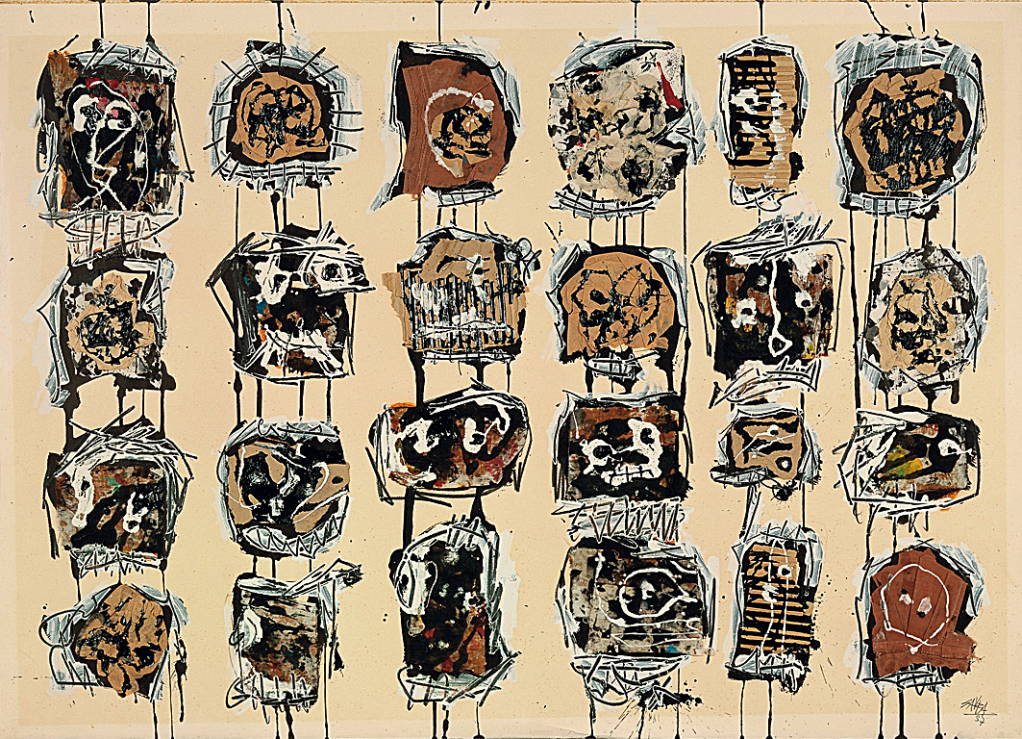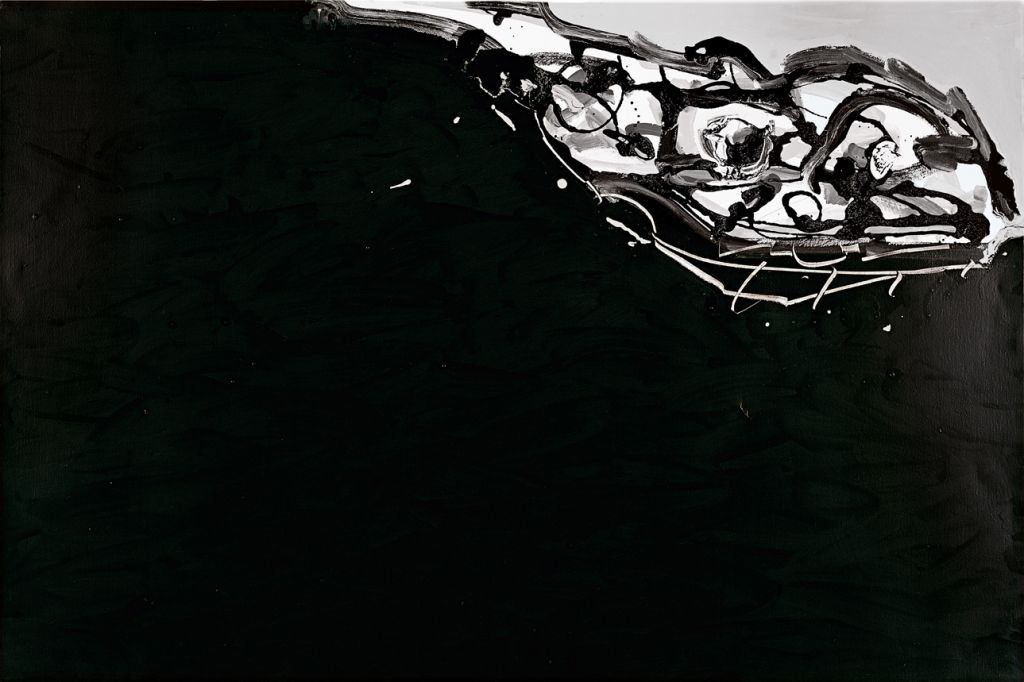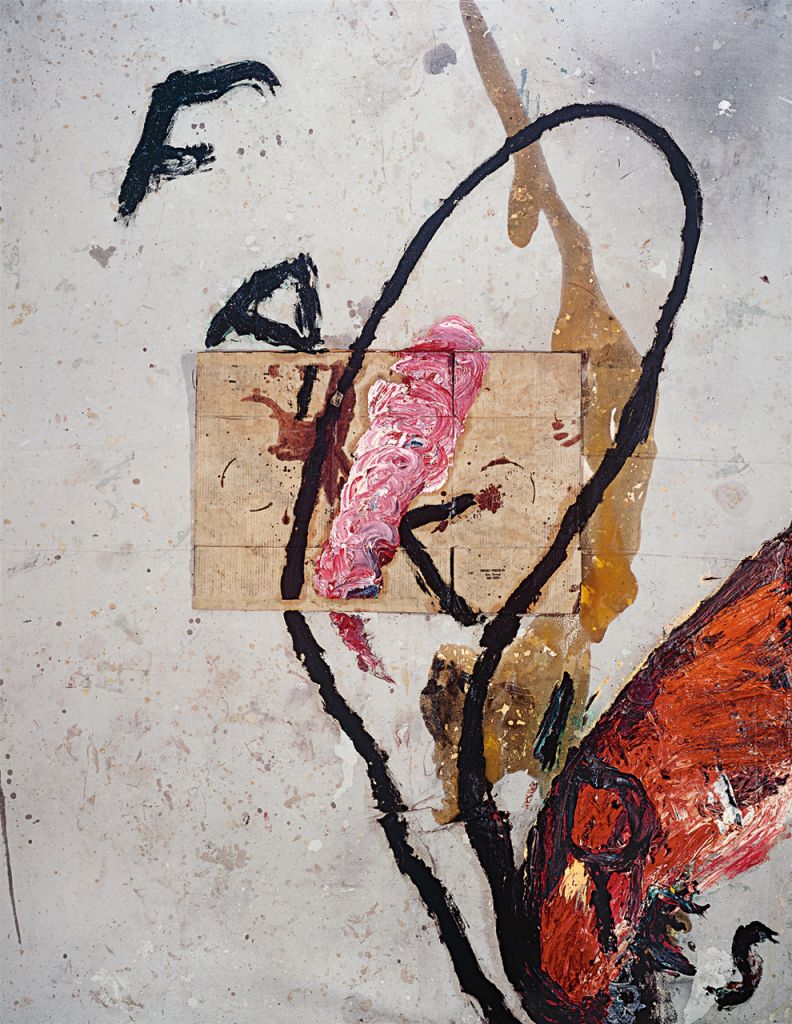Crucifixion
1959–63Oil on canvas133 x 164.6 cm
Antonio Saura was struck at an early age both aesthetically and emotionally by the work of Diego Velázquez and Francisco de Goya, two of Spain's greatest masters. But as a painter setting out in the repressive political and cultural climate of early-1950s Spain, he sensed that this grand tradition had to be wrested from the grasp of Francoist culture, which was setting it up in opposition to contemporary European Art Informel. Paradoxically, it was by subjecting high Spanish tradition to the most radical new modes of painting that Saura managed to free it and give it a powerful new life: he took the gestural painting associated with Art Informel and American Action painting and applied it to the figure and to traditional Spanish themes. After a short period in Paris in the 1950s, during which he briefly associated with the Surrealists, Saura returned to Spain and founded the group El Paso (1957-60), which in its work and in its eponymous publication promoted the advanced forms of painting being developed elsewhere in Europe and the United States. (Saura was one of the first to champion Jackson Pollock in Spain.) During this period Saura limited his palette to white and black and began the thematic series that would occupy him for much of the rest of his career, including the "Crucifixions," "Women," "Nudes," "Crowds," "Portraits," and "Imaginary Portraits" (the latter depicting historical Spanish figures such as Goya and Philip II). Saura was highly versatile: besides painting, he produced prints, illustrated books, and stage sets, and was also a prolific writer.
The Guggenheim Museum Bilbao's Crucifixion (Crucifixión) is one of the most striking of Saura's many paintings on the theme, which he began in 1957 and continued to work on until his death in 1997. This frenetically scrawled painting epitomizes what gave Saura's work a unique significance in Spain at the time: the bold and forceful way in which he took the great model created by Velázquez—he was responding in particular to Velázquez's famous Crucifixion (ca. 1632) in the Museo Nacional del Prado—and, by giving it a modern treatment, opened it up to critical debate. The crucifixion ceases to be a Christian or a cultural emblem and becomes instead an image of nothing less than the tragedy of the human condition itself. Indeed, Saura explained that there was no religious motive behind his embrace of this traditional biblical subject.[1] The painting is an artistic and political response to the world that confronted Saura—a "blast of protest,"[2] as he termed it, that turns the traditional "Man of Sorrows" into a secular figure.
Notes:
1. Saura, "Iniciales," in Antonio Saura: Peintures, 1956-1985 (Geneva: Musée Rath, 1989), p. 15; Antonio Saura par lui-même (Milan: 5 Continents Editions, 2009), p. 65.
2. Antonio Saura: Peintures, p. 16; Antonio Saura par lui-même, p. 69.
Source:
Rainer Michael Mason. "Antonio Saura." In Guggenheim Museum Bilbao Collection. Bilbao: Guggenheim Museum Bilbao; Madrid: TF Editores, 2009.
Original title
Crucifixion
Date
1959–63
Medium/Materials
Oil on canvas
Dimensions
133 x 164.6 cm
Credit line
Guggenheim Bilbao Museoa






